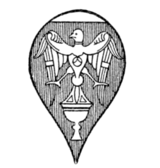Fig. 1, "Kiku-non-hana-mon," formed from the conventionalised bloom (hana) of the chrysanthemum, is the mon of the State. It is formed of sixteen petals arranged in a circle, and connected on the outer edge by small curves.
Fig. 2, "Kiri-mon," is the personal mon of the Mikado, formed of the leaves and flower of the Paulowna imperialis, conventionally treated.
Fig. 3, "Awoï-mon," is the mon of the House of Minamoto Tokugawa, and is composed of three sea leaves (Asarum). The Tokugawa reigned over the country as Shogune from 1603 until the last revolution in 1867, before which time the Emperor (the Mikado) was only nominally the ruler.
Fig. 4 shows the mon of the House of Minamoto Ashikaya, which from 1336 until 1573 enjoyed the Shogunat.
Fig. 5 shows the second mon of the House of Arina, Toymote, which is used, however, throughout Japan as a sign of luck.
The Saracens and the Moors, to whom we owe the origin of so many of our recognised heraldic charges and the derivation of some of our terms (e.g. "gules," from the Persian gul, and "azure" from the Persian lazurd) had evidently on their part something more than the rudiments of armory, as Figs. 6 to 11 will indicate.






